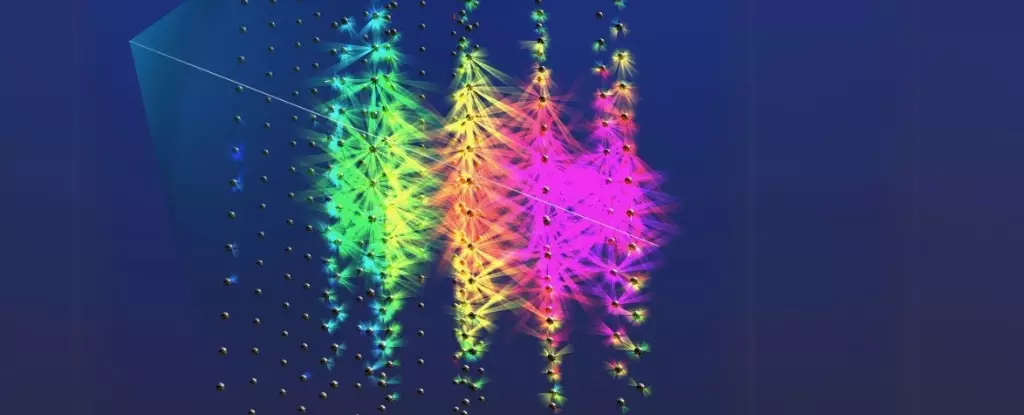On February 13, 2023, researchers detected an extraordinary phenomenon off the coast of Sicily—the arrival of a neutrino with an energy magnitude unheard of in the scientific community. Measuring a staggering 220 petaelectronvolts (PeV), this particle dwarfs the previous record-holder, which clocked in at 10 PeV. The implications of such a discovery extend far beyond a mere scientific query; they challenge our understanding of the cosmos and open up new avenues of exploration in astrophysics.
Neutrinos are subatomic particles known for their unyielding discreteness. They possess no electric charge and have an insignificantly small mass, making them elusive and difficult to detect. Despite being zillions of neutrinos streaming through human bodies every second without notice, the mechanisms that can generate these incredibly high-energy particles are ostensibly rare and extraordinary. The detector responsible for this groundbreaking detection was a Cubic Kilometer Neutrino Telescope (KM3NeT) array located 3,450 meters beneath the surface of the Mediterranean Sea.
Detecting neutrinos involves capturing the faint light emitted during their interactions with matter, typically in large volumes of water or ice. The recent neutrino event prompted the detectors connected to the KM3NeT to gather over 28,000 photons, a byproduct of the cascade of interactions initiated by the primary neutrino. Remarkably, the cascade occurred almost horizontally, suggesting that the neutrino traveled through extensive layers of rock and water before making its way to the detection site.
The muon—which emerged due to the neutrino’s interactions—was estimated to have an astonishing energy of around 120 PeV. Such a finding raises significant questions: What kind of cosmic event could produce a neutrino with such extreme energy levels? In the broad spectrum of astronomical phenomena, only a select few sources are known for their ability to accelerate particles to these extremes, such as supernovae, neutron stars, or the quintessential blazars—viciously active supermassive black holes that shoot jets of radiation towards Earth.
Given the diversity of high-energy events in the universe, pinpointing the origin of this neutrino is a complex challenge. Scientists proposed four hypotheses regarding the source’s locality: it could either emerge from within our galaxy, outside our galaxy but around the local Universe, stem from transient events such as gamma-ray bursts, or originate from distant extragalactic sources.
After scrutinizing the corresponding region of the sky, researchers determined that none of the first three hypotheses aligned with the detected neutrino. This led them to focus on extragalactic sources, particularly active supermassive black holes like blazars, which have been implicated as likely candidates for generating such active and energetic processes.
To this end, researchers identified a group of 12 potential blazars in the vicinity of the neutrino’s trajectory, yet they remained cautious in claiming definitive associations. The prevalence of blazars complicates the cause-and-effect narrative, as a multitude exist across the cosmos with varying levels of activity—a fact that, while fascinating, adds layers of complexity to this unfolding mystery.
Another intriguing avenue of exploration pertains to the concept of cosmogenic neutrino production. This phenomenon proposes that high-energy neutrinos are created through cosmic rays interacting with the cosmic microwave background—the relic radiation from the Big Bang—or through the interplay with background light found between galaxies. If confirmed, this would not only mark a significant scientific first but could also lead to revolutionary advancements in our understanding of cosmic events.
The duality of these hypotheses represents the essence of ongoing scientific inquiry: a dance between observation and theory, data and interpretation. Further investigations and studies will certainly be required to elucidate these nuanced connections, revealing the true nature of this remarkable neutrino and potentially the cosmic processes behind it.
The detection of this high-energy neutrino encapsulates a pivotal moment in astrophysical research, unveiling profound questions about the universe’s most energetic events. As scientists dive deeper into the layers of this phenomenon, what remains evident is the unyielding human drive to understand the cosmos. The universe continually presents challenges that compel us to adapt, innovate, and explore further into its vast unknown, reaffirming that every discovery carries the potential for others yet to be made.
The February 2023 neutrino event is not merely a record-breaking occurrence; it signifies an exciting new chapter in our exploration of cosmic wonders, pushing the boundaries of knowledge while inviting further inquiry into the mysteries lying beyond our earthly bounds.


Leave a Reply